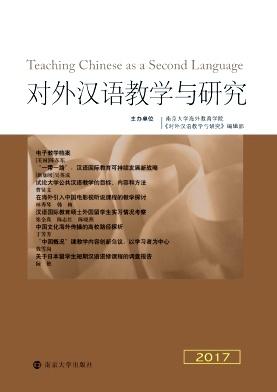A Comparative Study of the Two Sets of Chinese Textbooks in Singaporean Secondary Schools
引用次数: 0
Abstract
In the ethnically heterogeneous and linguistically hybrid Singapore, its bilingualism education is characterised by the mandatory mother tongue policy for its three main ethnic groups. For Chinese students’ language acquisition, this is practised in a way that Chinese language instruction in Singapore has been differentiated into four streams according to their individual differences in language proficiency. This study reports the findings obtained from a public funded large-scale empirical research project with a focus on the Mother Tongue Language curriculum in Singapore secondary schools. The questionnaire survey consists of 4811 students from 24 Singaporean secondary schools categorised on the basis of three key family language backgrounds, namely: Chinese-dominant, Chinese-English mixed, and English dominant. Using a comparative study methodology, the study seeks to juxtapose the perceptions of Secondary 2 and 3 students regarding their current language textbooks (developed in 2011) against the textbooks published in 2002. The survey revealed two key findings which highlight the diverse learning needs of students from varying backgrounds, thus indicating a greater and more complex challenge surrounding the revision of upcoming Mother Tongue Language instructional materials. It is our hope that the details of main findings manifested in this study can shed some light on the future endeavours in innovating Chinese education in other parts of the world with the similar sociolinguistic context.新加坡中学两套语文教材的比较研究
在种族多元、语言混合的新加坡,其双语教育的特点是对三个主要民族实行强制性的母语政策。对于中国学生的语言习得,新加坡的汉语教学根据他们语言能力的个体差异分为四个流派。本研究报告了一项公共资助的大规模实证研究项目的结果,重点是新加坡中学的母语课程。问卷调查包括来自24所新加坡中学的4811名学生,根据三种主要的家庭语言背景进行分类,即:中文为主,中英混合和英语为主。本研究采用比较研究方法,试图将中二和中三学生对当前(2011年开发的)语言教科书与2002年出版的教科书的看法并置。调查揭示了两个主要发现,突出了不同背景的学生的不同学习需求,从而表明围绕即将到来的母语教学材料的修订将面临更大、更复杂的挑战。我们希望本研究中主要发现的细节能够对具有类似社会语言学背景的世界其他地区的汉语教育创新提供一些启示。
本文章由计算机程序翻译,如有差异,请以英文原文为准。
求助全文
约1分钟内获得全文
求助全文

 求助内容:
求助内容: 应助结果提醒方式:
应助结果提醒方式:


